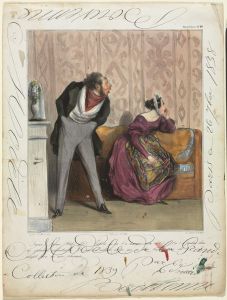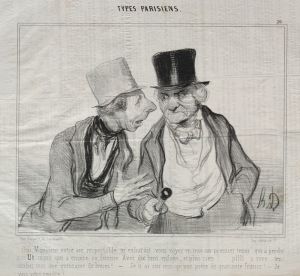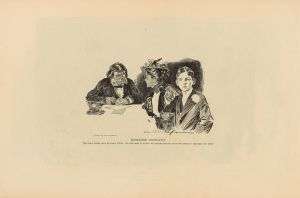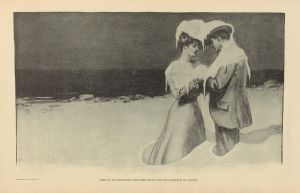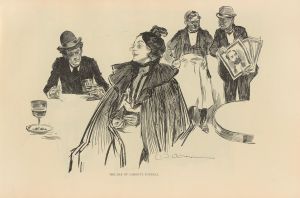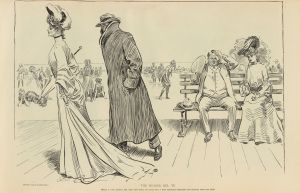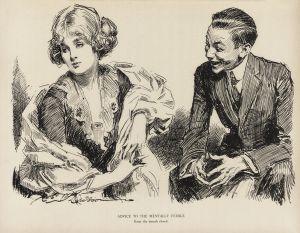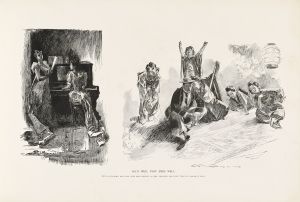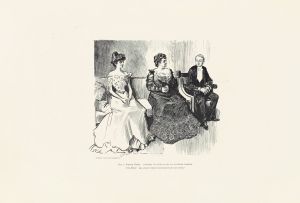
The weaker sex.—II
A hand-painted replica of Charles Dana Gibson’s masterpiece The weaker sex.—II, meticulously crafted by professional artists to capture the true essence of the original. Each piece is created with museum-quality canvas and rare mineral pigments, carefully painted by experienced artists with delicate brushstrokes and rich, layered colors to perfectly recreate the texture of the original artwork. Unlike machine-printed reproductions, this hand-painted version brings the painting to life, infused with the artist’s emotions and skill in every stroke. Whether for personal collection or home decoration, it instantly elevates the artistic atmosphere of any space.
"The Weaker Sex.—II" is an illustration created by the renowned American artist Charles Dana Gibson, who was active during the late 19th and early 20th centuries. Gibson is best known for his creation of the "Gibson Girl," an iconic representation of the idealized American woman of the time. His illustrations were widely published in magazines such as Life, Collier's, and Harper's, and they played a significant role in shaping public perceptions of gender roles during the Gilded Age and the Progressive Era.
"The Weaker Sex.—II" is part of a series of works by Gibson that humorously explore the dynamics between men and women. The illustration typically features a scene that highlights the perceived social and cultural differences between the genders, often with a satirical twist. Gibson's work is characterized by its detailed pen-and-ink style, capturing the fashion, demeanor, and social settings of the era with precision and wit.
In "The Weaker Sex.—II," Gibson continues his exploration of gender roles by depicting a scenario where the traditional power dynamics are humorously inverted or questioned. This approach was a hallmark of Gibson's work, as he often used irony and satire to comment on societal norms. His illustrations frequently portrayed women as strong, independent, and intelligent, challenging the conventional notion of women as the "weaker sex."
Gibson's illustrations, including "The Weaker Sex.—II," were influential in the early feminist movement, as they provided a visual representation of women who were confident and capable. The "Gibson Girl" became a symbol of the changing role of women in society, reflecting the growing movement for women's rights and suffrage. Although Gibson's work was not overtly political, it resonated with contemporary audiences who were beginning to question traditional gender roles.
The popularity of Gibson's illustrations can be attributed to their widespread publication in popular magazines of the time. This exposure helped to cement the "Gibson Girl" as a cultural icon and ensured that Gibson's commentary on gender roles reached a broad audience. His work remains a valuable historical resource for understanding the social attitudes and cultural shifts of the late 19th and early 20th centuries.
Overall, "The Weaker Sex.—II" exemplifies Charles Dana Gibson's ability to blend artistry with social commentary, using humor and satire to engage with the evolving discourse on gender. His illustrations continue to be studied and appreciated for their artistic merit and their contribution to the conversation about gender equality.





